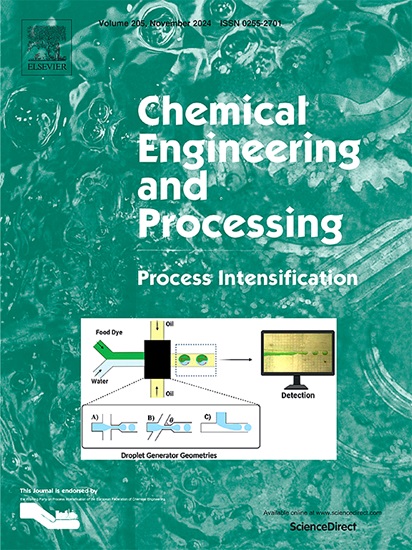Optimization and application of developed green nanocomposite materials for effective grey water purification
IF 3.8
3区 工程技术
Q3 ENERGY & FUELS
Chemical Engineering and Processing - Process Intensification
Pub Date : 2025-02-01
DOI:10.1016/j.cep.2024.110139
引用次数: 0
Abstract
This study explores the synthesis and application of a developed green nanocomposite material (GNCZ), combining activated carbon from date pits with zeolite NaA, for the efficient treatment of grey wastewater. Extensive characterization techniques, including X-ray diffraction (XRD), field emission scanning electron microscopy (FESEM) attached with energy dispersive X-ray analysis (EDX), Fourier transform infrared spectroscopy (FT-IR), and Brunauer-Emmett-Teller (BET) analyses, were employed to evaluate the material's structural and functional properties. Incorporating nano GAC in the zeolite structure manifested a surface area of 240.27 (m2.g−1), with an average pore volume of 0.1929 (cm3.g−1). The results demonstrate that the GNCZ exhibits significant adsorption capacity for various contaminants, with optimal removal efficiency achieved under specific conditions of pH, contact time, and temperature. The adsorption process was determined to follow pseudo-second-order kinetics, with thermodynamic analysis revealing an endothermic and non-spontaneous nature. Challenges related to the presence of competing anions, such as NO₃⁻ and SO₄²⁻, were identified, which can reduce the effectiveness of cation adsorption. However, the material's capacity for multiple regeneration cycles underscores its potential for long-term use in grey wastewater purification systems. This research suggests that, with further optimization, GNCZ could be a sustainable solution for enhancing water quality in agricultural and irrigation contexts.

求助全文
约1分钟内获得全文
求助全文
来源期刊
CiteScore
7.80
自引率
9.30%
发文量
408
审稿时长
49 days
期刊介绍:
Chemical Engineering and Processing: Process Intensification is intended for practicing researchers in industry and academia, working in the field of Process Engineering and related to the subject of Process Intensification.Articles published in the Journal demonstrate how novel discoveries, developments and theories in the field of Process Engineering and in particular Process Intensification may be used for analysis and design of innovative equipment and processing methods with substantially improved sustainability, efficiency and environmental performance.

 求助内容:
求助内容: 应助结果提醒方式:
应助结果提醒方式:


